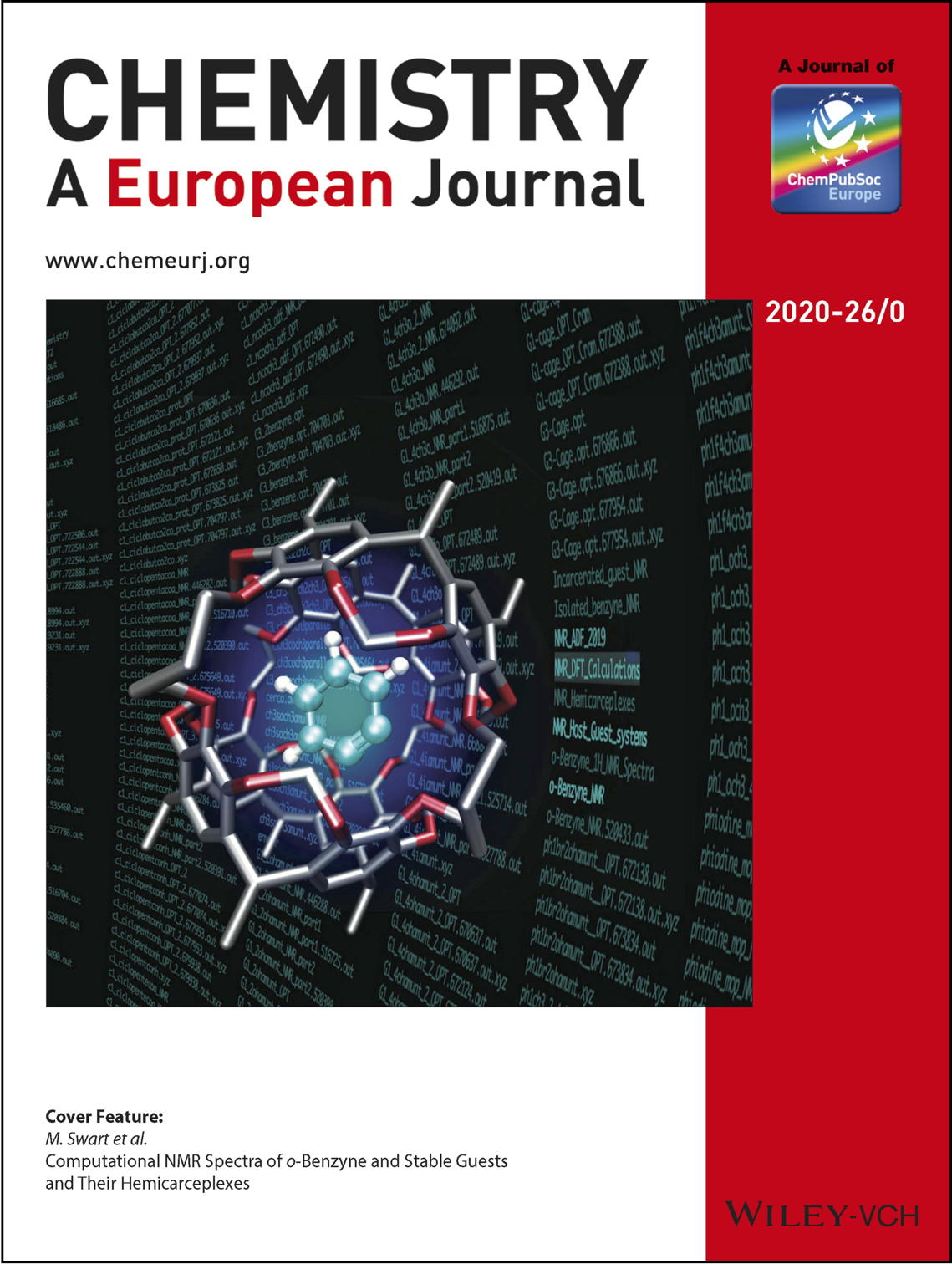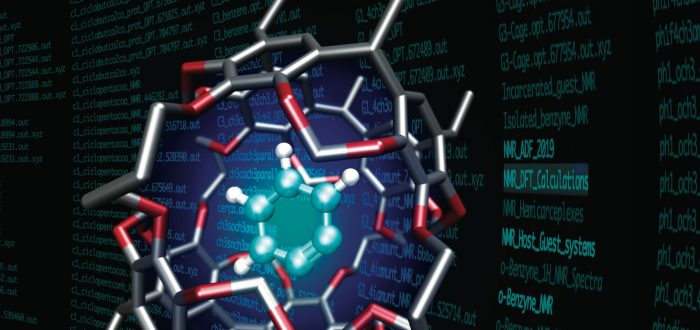
The incarceration of o?benzyne and 27 other guest molecules within hemicarcerand 1, as reported experimentally by Warmuth, and Cram and co?workers, has been studied by density functional theory (DFT). The 1H-NMR chemical shifts, rotational mobility, and conformational preference of the guests within the supramolecular cage were determined, which showed intriguing correlations of the chemical shifts with structural parameters of the host–guest system. Furthermore, based on the computed chemical shifts reassignments of some NMR signals are proposed. This affects, in particular, the putative characterization of the volatile benzyne molecule inside a hemicarcerand, for which our CCSD(T) and KT2 results indicate that the experimentally observed signals are most likely not resulting from an isolated o?benzyne within the supramolecular host. Instead, it is shown that the guest reacted with an aromatic ring of the host, and this adduct is responsible for the experimentally observed signals.
The paper resulted from a collaboration of Profs. Sílvia Osuna and Marcel Swart (IQCC) with Prof. Ken Houk (UCLA) and was recently published online in Chemistry-A European Journal:
A.C. Castro, A. Romero-Rivera, S. Osuna, K.N. Houk, and M. Swart
“Computational NMR Spectra ofo-Benzyne and Stable Guests and Their Hemicarceplexes”
Chem. Eur. J. 2020, ASAP [abstract]
DOI: 10.1002/chem.201904756
It was selected for the Cover picture of the journal as well:


